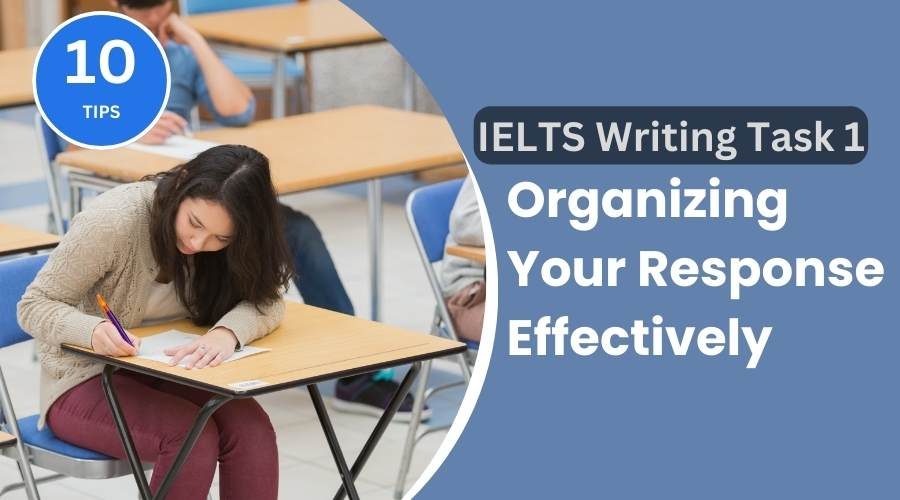Welcome to our guide on mastering the organization of your response in the IELTS Writing Task 1! Whether you’re aiming for the Academic or General Training module, the way you structure your response can significantly impact your score. In this blog post, we’ll share ten essential tips to help you organize your thoughts and present your ideas cohesively and effectively.
IELTS Writing Task 1 test Organizing tips
1. Understand the Task Requirements
Before you start organizing your response, ensure you fully understand the task requirements. Take time to read the prompt carefully and identify what specific information you need to include in your response. Understanding the task is crucial for planning your approach effectively.
Start Your Day With Positive Thinking

2. Analyze the Visual Prompt
Take a few moments to analyze the visual prompt provided in Writing Task 1. Whether it’s a graph, chart, table, or diagram, carefully examine the data and identify key trends, patterns, and significant features. This analysis will guide the organization of your response.
3. Plan Your Structure
Once you’ve analyzed the visual prompt, create a clear and logical structure for your response. Decide how you will organize the information, such as by grouping similar data together or presenting it in chronological order. Planning your structure in advance will help you stay focused and avoid unnecessary repetition.
4.Start with an Introduction
Begin your response with a concise introduction that provides context for the visual prompt. State what the visual represents and outline the main trends or patterns you will discuss in your response. Your introduction sets the stage for the rest of your writing and gives the reader a clear understanding of what to expect.
5. Present the Main Features
In the body paragraphs of your response, focus on presenting the main features of the visual prompt. Group similar information together and use clear and descriptive language to describe the data. Start with the most significant features and proceed to the less important ones to maintain coherence.
6. Use Paragraphs Effectively
Divide your response into paragraphs to enhance readability and organization. Each paragraph should focus on a specific aspect of the data, such as describing trends, comparing different elements, or highlighting significant points. Use topic sentences to introduce each paragraph and transitions to connect ideas smoothly.
7. Provide Supporting Details
Support your main points with specific details and examples from the visual prompt. Use numerical data, percentages, and comparisons to enrich your analysis and provide evidence for your assertions. Including supporting details adds depth to your response and strengthens your argument.
8. Maintain a Logical Flow
Ensure that your response flows logically from one point to the next. Use cohesive devices such as conjunctions, transitions, and linking words to connect ideas and create a smooth transition between paragraphs. A well-organized response is easier to follow and demonstrates your ability to present information effectively.
9. Summarize Key Points
End your response with a brief summary that highlights the main points you’ve discussed. Reinforce the key trends or patterns identified in the visual prompt and emphasize their significance. A concise summary provides closure to your response and leaves a lasting impression on the reader.
10. Proofread and Revise
Before submitting your response, take time to proofread and revise your writing. Check for grammatical errors, spelling mistakes, and punctuation issues. Ensure that your response is coherent, concise, and well-organized. Proofreading allows you to polish your writing and present your ideas with clarity and precision.
Don't avoid this
Before submitting your response, take time to proofread and revise your writing. Check for grammatical errors, spelling mistakes, and punctuation issues. Ensure that your response is coherent, concise, and well-organized. Proofreading allows you to polish your writing and present your ideas with clarity and precision.
All the sweet in last so never miss it!!
By following these ten tips, you can effectively organize your response in the IELTS Writing Task 1 and maximize your chances of achieving a high score. Practice implementing these strategies in your writing, and watch as your organization skills improve over time. Good luck!

